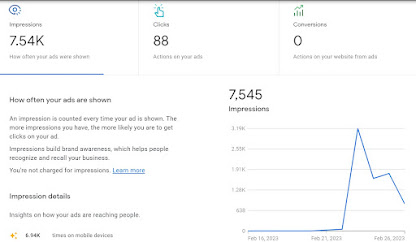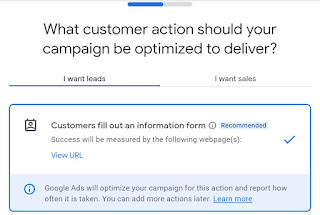Let's talk about how to ad! No, I'm not talking about 'adding' as in mathematics, I'm talking about how to advertise! This class enabled me to gain real-life experience running a legitimate ad campaign with the help of Google Ads. As you may have seen in my previous posts, Google Ads comes equipped with a user-friendly platform, packed full of helpful suggestions and analytics to help you run a successful campaign. So I wondered, what else is out there and how can I get some familiarity with other practical platforms for running and managing ad campaigns?

The answer is all around us! I didn't really consider how available ad campaigns can be but if you think about it, it really does make sense. Where do you see ads in your day to day interactions? The answer is, Social Media! Google, Facebook, LinkedIn, Twitter... all generate massive amounts of revenue from advertisements. Further yet, the picture/video platforms offer marketing and advertising opportunity as well. Snapchat, TikTok, YouTube, Instagram... the full arsenal of social media platforms that can help you advertise better than ever before.
So I wondered, Which platform is the best? and How does one determine which platforms to utilize? Here's what I found:
One study, comprised of surveys from nearly 1,500 marketers gave some strong insight into which platforms are considered the best. The below graphic is a two-fold depiction. The dark blue bar represents the percentage of surveyed marketers that use each platform for marketing/advertisement. The light blue bar represents Return-On-Ad-Spend (ROAS).
(Muhammad, 2022)
More than half of those surveyed use LinkedIn, YouTube, Instagram, Google, and Facebook. More importantly, Facebook and Google were the juggernauts of ROAS, providing 25% and 44% ROAS, respectively. This indicates that these two platforms are where your best performance outcomes are and Google is far and above everyone, even the second place Facebook. So there you have it, all you need to do is run your ad campaign on Google, right? Well, we've learned from this class that this would not be the most successful strategy. It's valuable to understand your target audience, your reach, and where you can have the most success using multiple modes of marketing and advertising platforms together.
I found a blog post with a descriptive and helpful explanation of what to consider when advertising on these platforms. Overall, it gave me a much better understanding of what types of platforms to consider for ads and why. Here's a high-level summary of the benefits for running ads on social media sites vs Google Ads:
Key Advantages to Running Social Media Ads:
1. Improving your brand recognition and building awareness
- Even though users are not ready or interested in buying your product, you allow them to become familiar with your brand and can showcase your company/product.
2. Getting insights about your target audience
- Learn more about your intended audience. Use the data/analytics to optimize your campaign's performance.
3. Growing engagement rate
- Increases your reach and audience engagement. Relevant and interesting content can funnel potential customers to your brand.
4. Increasing inbound traffic
- Social media can increase traffic to your site or brand. Clicking on your ads can help customers find out more about your company, products, services, etc and allows the opportunity for them to volunteer contact info or subscribe to alerts or newsletters.
5. Generating and improving brand loyalty
- Grow awareness and develop nurturing relationships with potential and existing customers/viewers.
6. Building a brand community
- Create a community around your brand to increase word-of-mouth referrals and promote company growth.
Key Advantages to Running Google Ads:
1. Google Ads are a fast way to gain leads
- Reduce the time to build up your SEO and allow Google to target warm leads and funnel traffic to your site/brand.
2. Transparency and competition
- Google displays what competitors in your industry are paying and bidding for similar ads. Use that data to gain a competitive advantage on the optimization of your ads.
3. Reach more potential customers
- Google is the world's largest search engine. Google Ads can vastly improve your immediate reach by channeling your ads through YouTube, Gmail, and Display Networks.
4. Understand your target audience better
- Review helpful data points such as most-used keywords, demographics, locations, and age of users who viewed your ad or clicked your ad to narrow the focus of your ad or adjust the content to hone in on your target audience.
(Nexoya, 2022)
Hoping you find this as helpful as I did. I know I will be using this knowledge to try to leverage my digital marketing/ad skills to even more successful campaigns in the future and I hope you do too!
Until next time,
Source Citation:
1. Muhammad, F. (2022, November 3). The Best Digital Advertising Platforms. Instapage. https://instapage.com/blog/best-advertising-platforms
2. Nexoya. (2022, April 11). Social media vs Google Ads: Which is better for your strategy? Nexoya. https://www.nexoya.com/blog/social-media-google-ads-which-is-better-for-your-strategy/




































